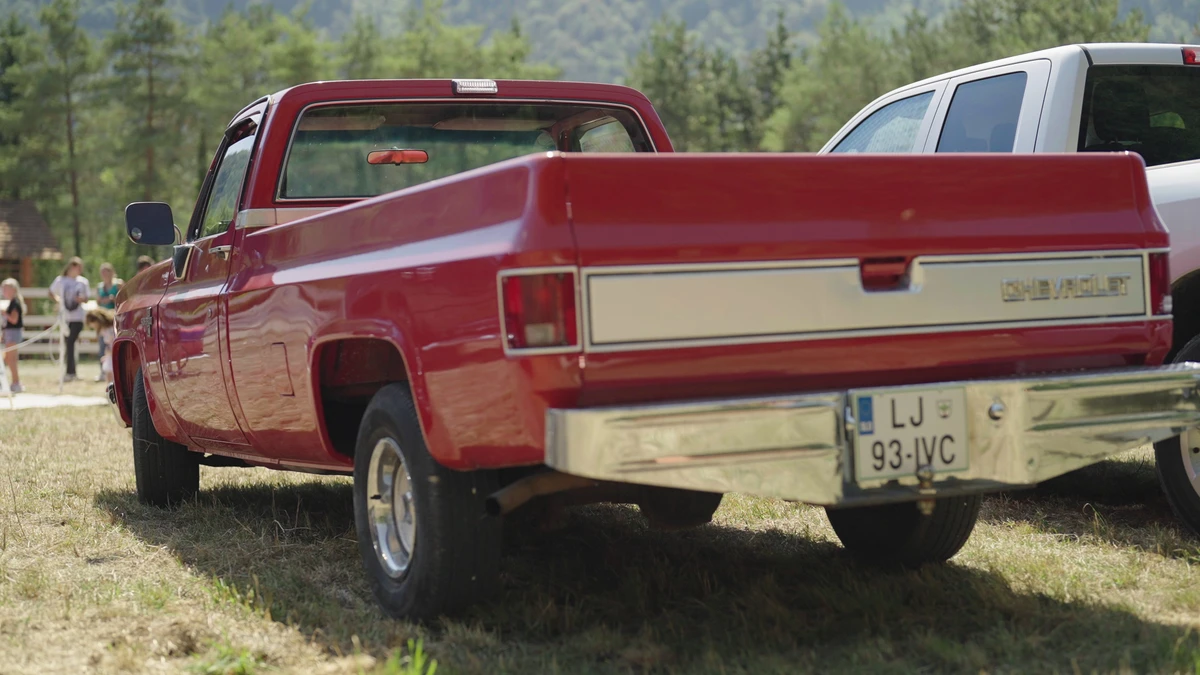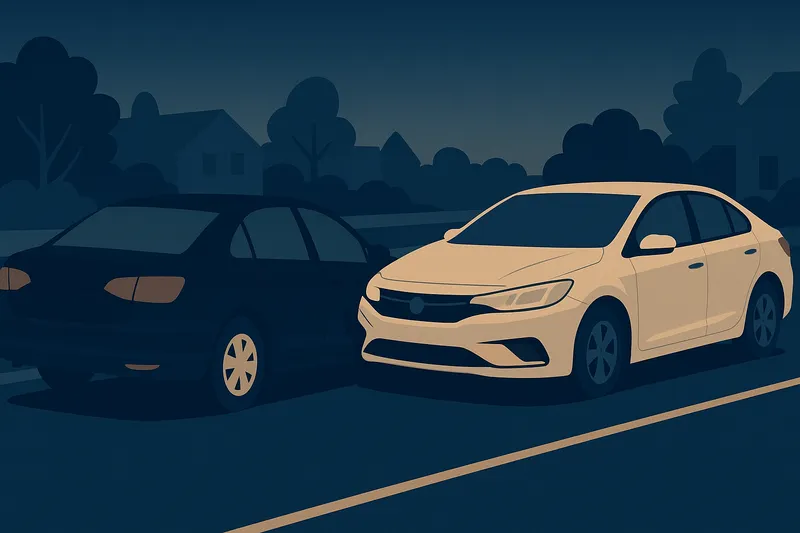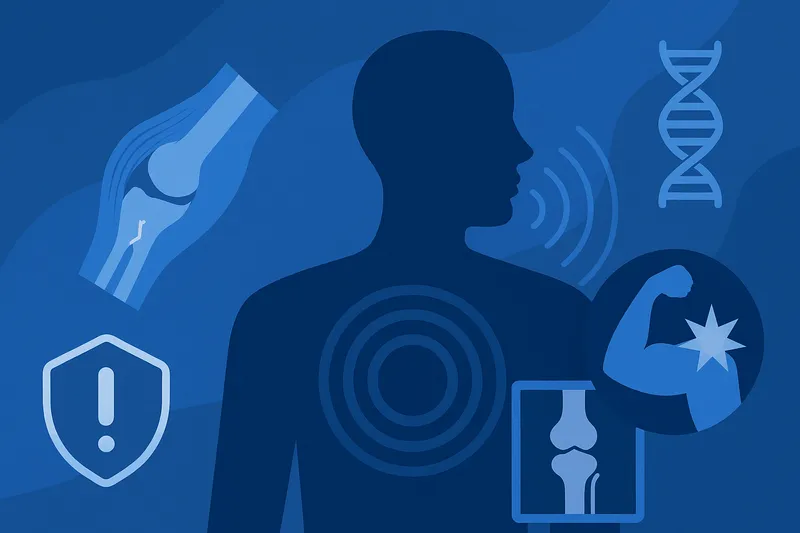Trailer Hitches and Rear-End Collision Impacts

Published: 6/30/2022
In this article, we explain how trailer hitches can increase the severity of a rear impact collision and how insurance adjusters can try to unfairly devalue your rear-end collision claim.
How a Trailer Hitch Changes Rear-End Collision Physics
A trailer hitch can make a rear-end crash more severe for the people inside the struck vehicle. Normally, cars are built with bumpers and crumple zones that absorb impact energy. In a typical rear collision without a hitch, the rear bumper deforms and spreads out the force, protecting occupants by slowing the crash pulse (the acceleration felt) over a slightly longer time. A trailer hitch, however, is a rigid metal connection bolted to the frame, and it does not compress or absorb impact. This means when another vehicle hits the rear of a car with a hitch, the hitch acts like a solid steel beam or “nail” directing the force straight into the car’s frame. Instead of the back end crumpling to soak up energy, the collision energy goes directly into the struck vehicle’s structure and its occupants. In simple terms, the hitch makes the impact “stiffer” – the hit feels more like a sudden jolt than a cushioned bump.
Imagine hammering a nail. If you hit the nail straight on, it doesn’t bend – it takes the full force of the hammer. But if you hit it at an angle, the nail bends, absorbing some energy. A trailer hitch makes your car take a hit “straight on” (no bending or crumpling), so the people inside feel a sharper impact. Engineers describe this as a stiff crash pulse: the peak G-forces (acceleration) on the car and occupants are higher because the car doesn’t crumple in the back. In fact, crash tests have shown that adding a tow hitch can significantly increase the acceleration forces on the vehicle and the crash test dummy compared to the same crash without a hitch. The car might stop more suddenly because the hitch prevented it from crumpling gradually.
Over the years, automakers have improved bumpers and frames to absorb collisions and protect people. A trailer hitch counteracts those safety designs. It creates a direct path for force into the car’s body. As a result, the vehicle with the hitch often sustains less visible damage, but the occupants experience more force on their bodies. One study of real-world crashes found that having a tow-bar (hitch) on the struck car increased the risk of whiplash-related injury by about 22%. Some research even suggests this effect might be greater for women and children, who are physically more susceptible to whiplash. In other words, people are more likely to get neck injuries (like whiplash) if their vehicle has a trailer hitch during a rear-end collision, even though the hitch can prevent some car damage.
Minor Damage, Major Force: Why Looks Can Be Deceiving
In many rear-end accidents involving a trailer hitch, the striking vehicle (the one that hits from behind) shows obvious, significant damage, while the struck vehicle with the hitch looks nearly fine. The hitch essentially focuses the impact on a small area of the other car. For example, a large truck that rear-ended a smaller SUV ended up with its front bumper bent and crushed. The SUV’s hitch acted like a battering ram against the truck’s front end, so the truck absorbed a lot of the crash energy in its own crumpling. From the perspective of the car that got hit, it’s almost as if the car “punched” the other vehicle with the hitch.
In that same incident, the SUV with the hitch showed barely any visible damage – just a few scrapes on the bumper cover. Because the hitch is attached to the SUV’s frame, the impact didn’t deform the SUV’s outer body much at all. This minimal rear damage can be very misleading. Even when a car looks nearly unhurt, the force of the collision may have been quite severe. In the SUV’s case, the driver later reported serious whiplash despite the vehicle’s minor cosmetic damage. The lack of bending or crumpling in the SUV meant the collision forces were transmitted through the hitch and frame, jostling the occupants. The SUV stopped very suddenly, and the occupants’ bodies – especially their neck and head – were whipped forward and back abruptly, which is the classic mechanism of whiplash.
It’s common after a hitch-involved rear-end crash to see the struck vehicle’s damage appear minor even though the impact was significant. The rear bumper might not be crushed, the paint might have only scratches, or the hitch might just be slightly bent. Meanwhile, the car that struck it could have a caved-in front end or leaking radiator. This happens because the hitch prevented the usual energy absorption by the rear bumper. The energy that would normally deform the back of the car instead went into pushing the whole car forward (and suddenly accelerating the people inside). Studies of low-speed crashes have noted that vehicle damage doesn’t always correlate with injury risk – you can have high occupant forces with low vehicle damage. In fact, one engineering analysis found that when a car is hit from behind and the hitch stops the crumpling, the occupants can be thrown forward at about 2.5 times the acceleration of the striking car (because the struck car rebounds so quickly). So, a “light tap” from behind can feel far more violent to a person’s neck than it looks on the bumper.
Insurance Company Tactics with Low-Damage Collisions
Insurance companies know that a vehicle with little damage makes a claim harder to prove to a jury, and they often exploit this in rear-end collisions. Adjusters may say things like, “There’s hardly any damage to your car, so you couldn’t have been hurt.” This is a common tactic: they argue that a low-speed crash or minor fender-bender couldn’t cause serious injuries. It’s even got a nickname in the industry – the “MIST” defense, which stands for Minimal Impact Soft Tissue injury claim. In cases where a heavy steel hitch absorbed the impact and left little visible damage, an insurer might be especially skeptical. They might deny the injury outright or offer a very small settlement, suggesting that because the car isn’t crumpled, the forces were trivial.
Don’t be fooled: lack of vehicle damage does not mean lack of injury potential. Insurance representatives often ignore the physics discussed earlier. They may not consider how the hitch made the crash pulse more intense. Their goal is to minimize payouts, so they will point to the pristine bumper and imply the occupant is exaggerating. Unfortunately, jurors can also be influenced by the apparent lack of damage, thinking “How bad could it have been if the car looks fine?” Insurers know this, so they may take a hard line on these claims, forcing victims to prove that the crash hurt them. They might say your pain is from something else or that it’s just minor and will go away, citing the low repair bills as “evidence” the crash was minor. This is why many hitch-related rear-end injury cases become difficult battles – the injured person must overcome the assumption that a barely dented bumper equals no injury.
The reality is, whiplash and other soft-tissue injuries can occur at very low speeds, and a stiff hitch collision can injure you even if your car has almost no dents. Insurance companies are aware of studies, like the 22% increased risk with hitches, but often downplay or ignore them when evaluating a claim. They might require extensive proof – medical records, expert testimony, even biomechanical analyses – before they concede that you were hurt. All of this is a strategy to save money by denying or reducing valid claims.
Key Steps for Victims After a Hitch Rear-End Collision
If you’ve been rear-ended and your vehicle had a trailer hitch, you need to take extra care in documenting the crash and your health. Here are important factors and steps to consider when dealing with insurance and evaluating your injuries:
-
Don’t dismiss your injuries: Even if you feel “okay” right after the accident, be cautious. Whiplash symptoms can be delayed – you might feel pain or stiffness hours or days later. Take any hint of neck or back pain seriously. The shock of impact with a hitch can injure muscles, ligaments, or spinal discs even if you don’t bleed or break a bone. Get a medical evaluation as soon as possible to check for soft-tissue injuries. This not only protects your health but also creates a medical record. If you delay treatment, an insurer might argue that you weren’t really hurt or that something else caused your pain.
-
Document the scene and damage: Because your car’s damage may be minimal, photographic evidence is crucial. Take pictures of your vehicle’s rear end and the hitch itself, and also photograph the other vehicle’s front end. Often, the other car will have much more visible damage (for example, a bent hood or cracked grille) – those photos show the force of the impact. By capturing the other car’s smashed front, you counter the “no damage” argument with proof that something absorbed a lot of energy. Also, if your hitch or frame shows any signs of damage or bending, photograph that too.
-
Get a vehicle inspection for hidden damage: Just because you can’t see much damage doesn’t mean everything is fine structurally. Have a trusted mechanic or body shop inspect your car’s frame and undercarriage. In many hitch rear-end crashes, the frame or subframe may be bent or stressed even if the bumper cover looks fine. For example, the bolts attaching the hitch might deform the frame rails or the spare tire well could be crumpled internally. Finding this hidden damage can not only confirm how violent the crash really was but also needs to be repaired for safety. It also provides further evidence against the “minor impact” claim – if your frame is warped, the impact was significant.
-
Save all injury documentation: Keep records of any medical visits, diagnoses (like whiplash, sprains, herniated disc, etc.), medications, therapy, and days of work missed. Insurance companies often demand proof of every complaint, especially in low-damage crashes. Having a consistent trail of medical evidence helps validate your injury. Follow through with recommended treatments; not only does this help you heal, but gaps in treatment can be used by insurers to argue you weren’t hurt badly.
-
Be careful with insurance communications: When speaking with the at-fault driver’s insurer, stick to the facts. Do not downplay your pain or say “I’m fine” out of politeness. What you say can be used against you. It may be wise to consult with a personal injury attorney in these cases, since insurance adjusters are trained to minimize payouts. An attorney familiar with trailer hitch rear-end cases can help gather the right evidence (for example, crash reconstruction or expert biomechanical opinions) to counter the insurer’s arguments. They can also handle communications so you don’t fall into any traps. Remember, you may need to explicitly point out the role of the trailer hitch to the insurer, backed by studies or expert statements, to make them understand that a lack of damage doesn’t equal a lack of force.
In summary, a trailer hitch can deceive both victims and insurance companies about the severity of a rear-end collision. The physics show a hitch makes the impact more sudden and forceful for the occupants, even if the car looks relatively unscathed. Injury victims should be aware of this effect, trust their body’s signals, and proactively document and advocate for themselves. While your bumper might only have a scratch, your neck and back could have taken a serious hit. By understanding the science and gathering solid evidence, you can overcome the “minor damage = no injury” myth and ensure any claims are evaluated fairly.
Related Articles





